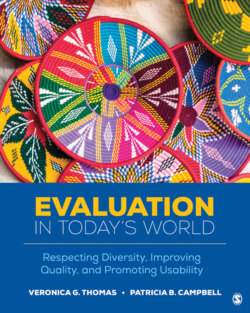Читать книгу Evaluation in Today’s World - Veronica G. Thomas - Страница 112
Chapter 3 Historical Evolution of Program Evaluation Through a Social Justice Lens
ОглавлениеDescription
Shutterstock/Lightspring
Tracing evaluation’s history must be more inclusive than it has been in the past, uncovering and acknowledging a broad range of events, influential figures, and “multiple truths” that left an indelible footprint on the field, especially aspects that moved us closer toward a more equitable society.
The history of evaluation matters but only when it is an inclusive history of evaluation that is both critical and contextual and not just a celebratory and ceremonial account of ideas, methodological perspectives, and dominant figures of the past. A history of evaluation that matters includes letting readers know that evaluation, in some form, has been around since antiquity; that evaluation in the modern times has been powerfully influenced by the social, economic, political, and racialized climate of the day; and that there are “hidden histories” and prominent evaluators of color who made substantial, but often unrecognized, contributions in the field toward social justice aims as early as the 1940s and 1950s.
After reading this chapter and participating in the activities, readers will be able to meet the following learning objectives:
Describe evaluation activities taking place prior to the 20th century
Connect political, economic, and other societal conditions to the growth, and sometimes decline, of evaluation in the 20th century
Identify “hidden histories,” “hidden figures” of color, and influential women who contributed to evaluation’s theoretical, methodological, and equity agendas
Explain 21st-century trends in the evaluation profession
